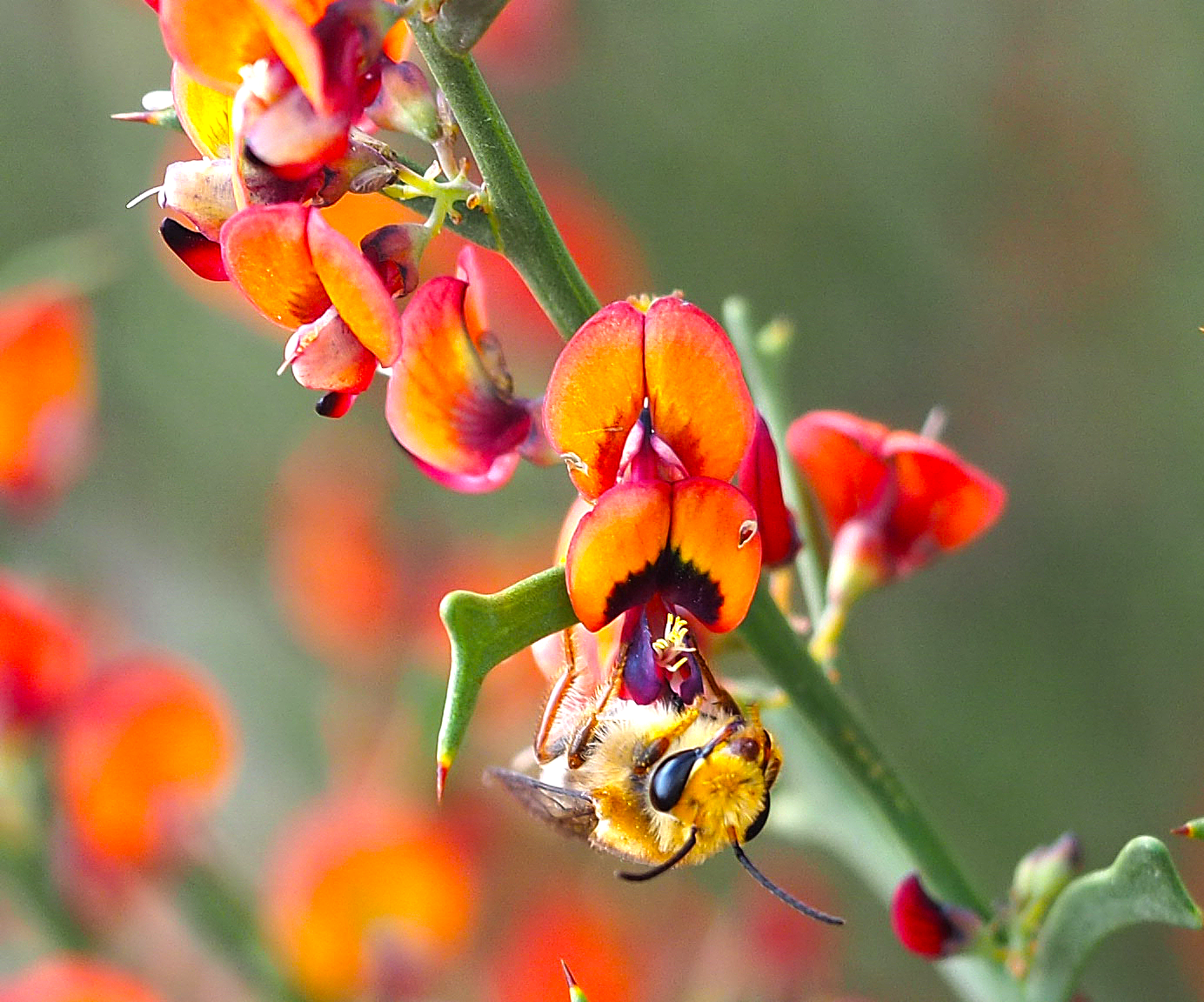As bee populations decline worldwide, public interest in their conservation is increasing.
But how much do we know about helping our local bees?
Dr Kit Prendergast – also known as the Bee Babette – is a native bee ecologist who studied at Curtin University.
She’s on a mission to find out what WA bees want and how we can give it to them.
what’s the buzz?
There are over 20,000 known bee species.
The majority of research has focused on honey bees—specifically the Western honey bee, Apis mellifera.
Considering that one-third of the world’s food production relies on their pollination services, it’s unsurprising honey bees have dominated the scientific spotlight.
But Kit says native species have different requirements than exotic honey bees. And we know little about our local bee populations.
“There is virtually no ongoing monitoring of [wild] bee fauna,” says Kit.
“There are 1661 described species [in Australia], but hundreds more aren’t described.”

The native amegilla bombiformis aka the teddy bear bee | Robert Whyte via flickr
picky pollinators
Native bees often have specialised diets and restricted distributions.
But when bushland is cleared for farming, we rarely find out how resident bees are affected.
“We could be losing species before they’re even given a name, species we aren’t even aware of,” says Kit.
checking in to bee hotels
Trap nests, also known as bee hotels, have become a popular way to encourage native cavity-nesting bees into urban areas.
But Kit says commercially available bee hotels are often built without scientific backing, and their impact on native species isn’t well understood.

Meroglossa rubricata using a bee hotel | Dr Kit Prendergast
In a recent 2-year study, Kit installed 120 specially designed bee hotels at 14 sites across Perth to see how different bees reacted.
The hotels attracted 24 species. Most of the native bees preferred smaller nesting holes with diameters of 4–7 millimetres.
“Many bee hotels have holes that are too big,” says Kit.
“When designed correctly, [they] can support a high diversity of native bees.”
Kit says bee hotel distributors need to collaborate with scientists to improve their designs.
Discerning taste
An abundance of their favourite food is another deciding factor for nesting bees.
In a separate study, Kit found that native bees around Perth prefer to forage at particular native flora.
She says the ‘just plant flowers’ approach may be an ineffective way to help native bees.
“We need to be planting the right kinds of flowers,” says Kit.
“There are a few species that an incredible diversity of native bees really prefer.”
The top 10 flora that native bees preferred included eucalypts, bottlebrushes, melaleucas and native peas.
These plants were visited by 70–80% of all native bees during the study.
why natives are the bee’s knees
The importance of bees as pollinators for a wide variety of plants is well known.
But you may not know that only certain species – including many Australian natives – can perform ‘buzz pollination‘.
This is where bees contract their flight muscles to vibrate the plant’s anthers, releasing hard-to-access pollen.
Many native flowers, and even some garden plants like tomatoes, need this technique for pollination.
In this way, native bees can support native plant populations and vice versa. This contributes to healthy biodiversity levels.
if you wanna-bee a bee-lover
Kit emphasises that, no matter how ‘useful’ bees may be to humans, every species is worth saving.
“Asking what a creature can do for us … is what led us to this current biodiversity crisis,” says Kit.
“We should be asking how can we help bees in our backyards and in the larger landscape?”
She says the first step towards achieving this is getting up-to-date information to the public and governing bodies.
“Nurseries and councils could be planting native street trees like Corymbia calphylla rather than jacaranda, for example,” says Kit.

Corymbia calophylla flowers | Jean and Fred Hort via flickr
“And we need to include surveying native bees in environmental impact assessments.
“At the moment, if someone wants to develop land, bees don’t need to be considered, but they should be due to their ability to act as indicator species and their important roles in the ecology of a landscape.”









